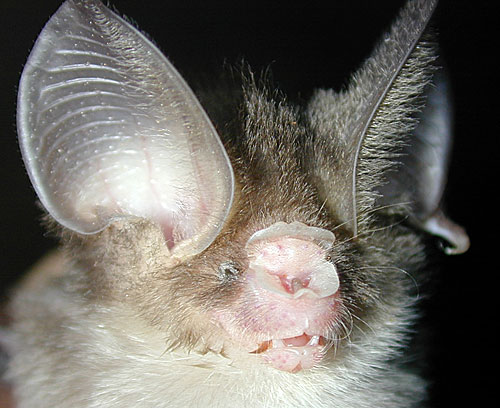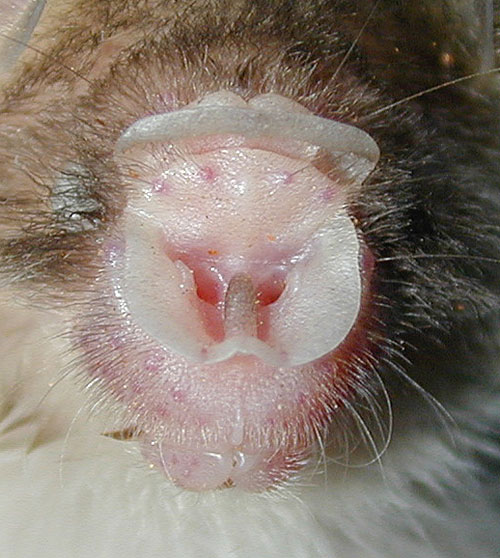Hipposideros cineraceus
Ashy Leaf-nosed Bat
Morphological description Life history Distribution Habitat Roost sites and roosting patterns Emergence and flight pattern Foraging behaviour Echolocation calls Status and protection


Morphological Description
· Forearm length 31.7 - 36.0 mm, mass 3.1 - 4.6 g in China. Ear length18.5-21.5 mm elsewhere in South-East Asia (Francis 2008).
· Upperparts buff-brown to grey, underparts paler.
· The small size, echolocation call frequency, and straight-sided shape of the internarial septum (in comparison with bats from Myanmar) fits descriptions of this species in Myanmar, Thailand and elsewhere in south-east Asia (Francis, 2008 S. Puechmaille, pers. comm.). There are apparently two forms of H. cineraceus in south-east Asia, and the bats from China fit the description of the widespread, smaller form (Francis, 2008). In Ningming County, Guangxi, about 60 bats of only this species roosted within a cave near villages.
Life history
· Little known
Distribution
Our records from Guangxi and Yunnan are the first for China.
Habitat
· Little known.
Roost sites and roosting behaviour
· Caves are the typical diurnal roosts, and we recorded up to 60 bats in one cave.
· This species roosted with H. pomona in Yunnan.
Emergence and flight pattern
· Most hipposiderid bats have wing shapes that make them adept at foraging in cluttered environments.
Foraging behaviour
· Little known
Echolocation calls
The echolocation call is a short constant frequency signal, with a brief frequency-modulated start and tail. The bats in Guangxi called with frequencies of most energy close to 156 kHz. In Yuanjiang and Baoshan counties, Yunnan, this species roosts with H. pomona, and calls at higher FMAXE values, at about 162 kHz.
Status and protection
· There is no estimation of population size in China.
· Because ours are the first records for the country, the species is presumably very localised in China.
· Caves should be protected as their habitats.
· IUCN global status is least concern, population trend unknown (2008).